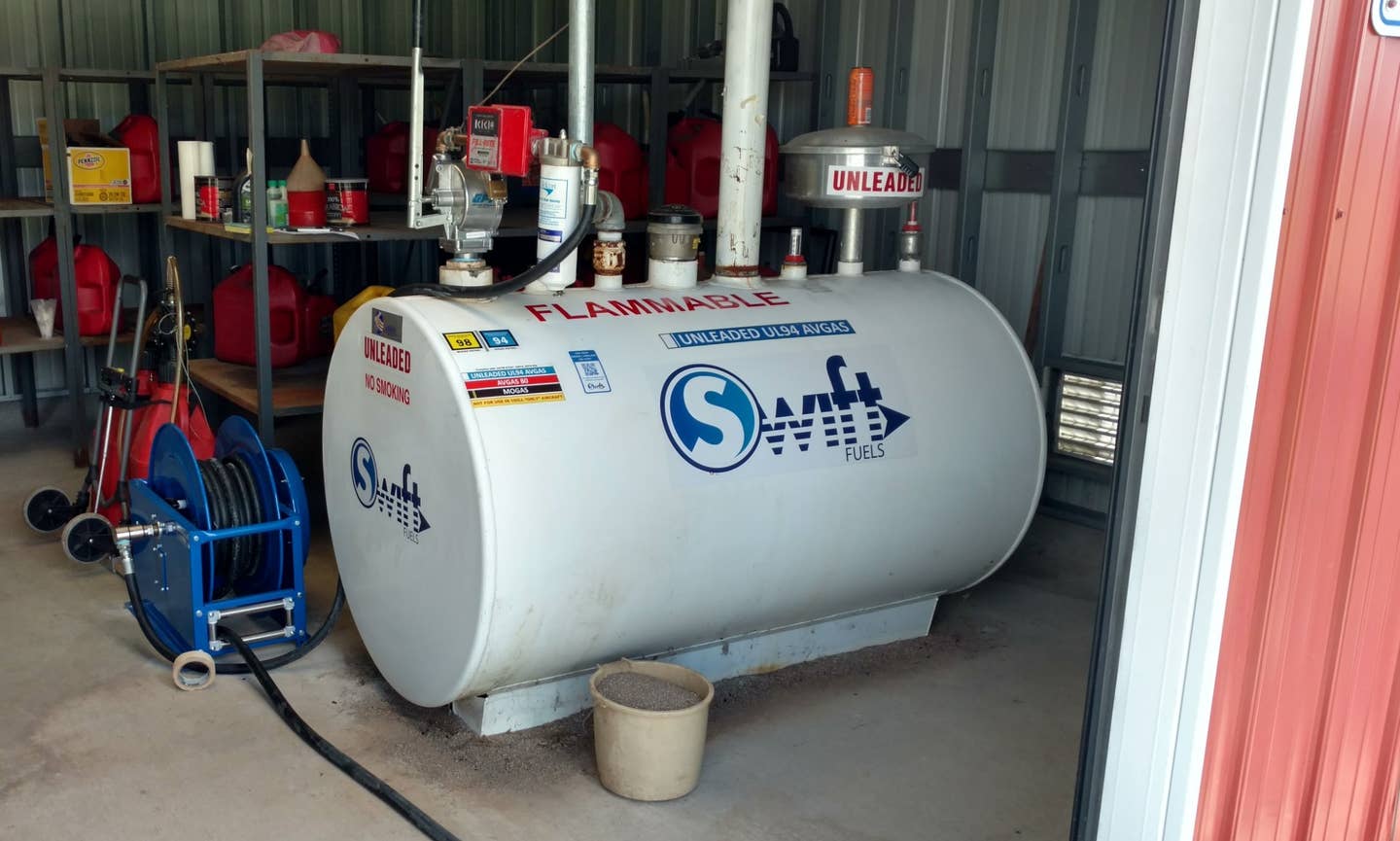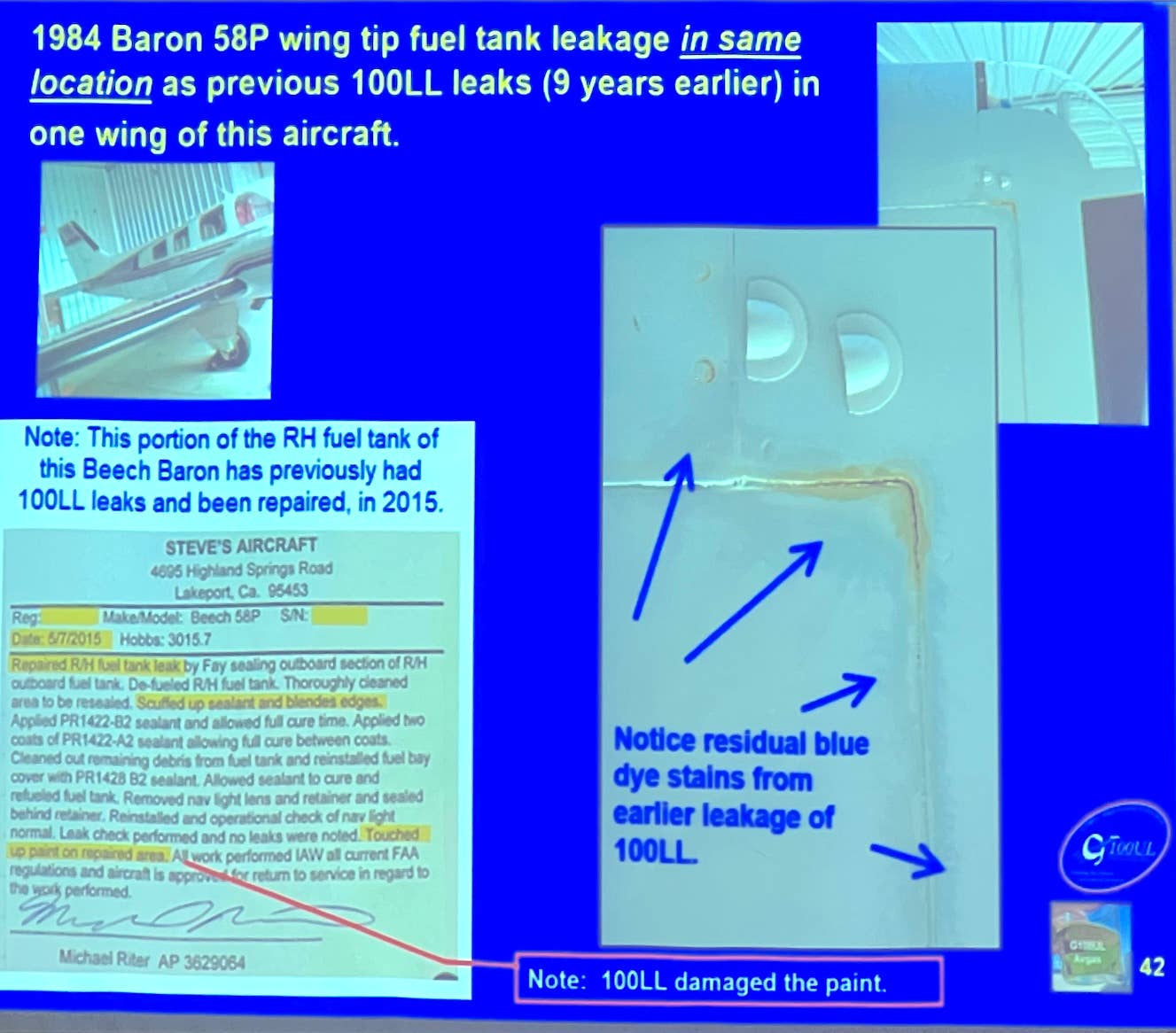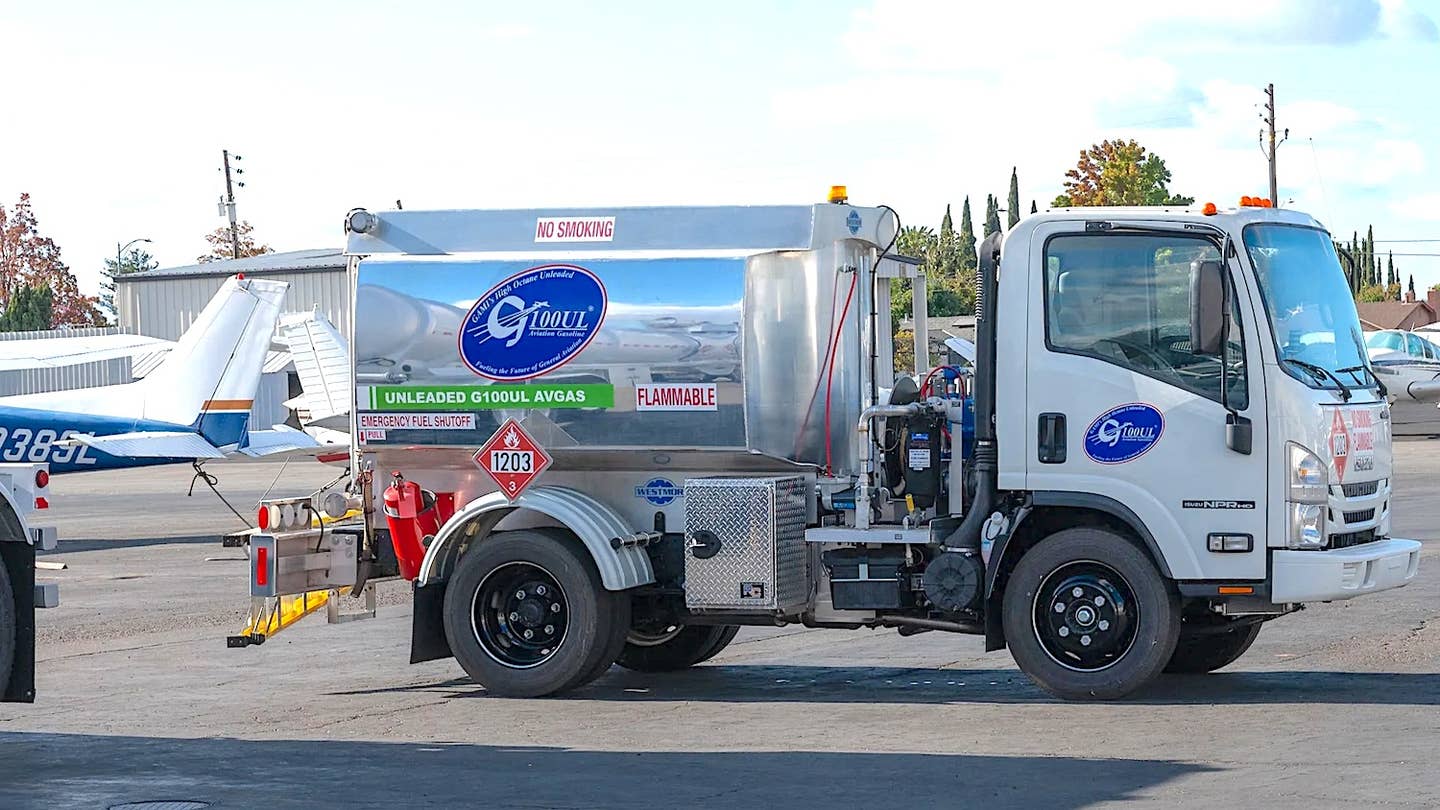Magellan GPS 315A
The tiny, ultra-low-price Magellan 315A is the first new handheld GPS in the aviation marketplace in more than a year, and the first to break the $300 price barrier. AVweb’s Mike Busch put the 315A through its paces and found it to possess an interesting contrast of striking strengths and serious shortcomings. Read Mike’s in-depth review to learn whether or not this is the right unit for you.
 The handheld GPS market has been eerily quiet lately.During 1996 and 1997, it seemed as if a new aviation handheld was being announced everyfew months, as manufacturers jockied for position to out-feature and under-price thecompetition. But Sun 'n Fun 1998 saw only one new product announcement in thiscategory: the Lowrance AirMap 100. During the year thatfollowed, there was really nothing new to report - unless you stretch the definition of"handheld" to include kneeboard-sized units like the SkyForce IIIc and theMagellan EC-20X.
The handheld GPS market has been eerily quiet lately.During 1996 and 1997, it seemed as if a new aviation handheld was being announced everyfew months, as manufacturers jockied for position to out-feature and under-price thecompetition. But Sun 'n Fun 1998 saw only one new product announcement in thiscategory: the Lowrance AirMap 100. During the year thatfollowed, there was really nothing new to report - unless you stretch the definition of"handheld" to include kneeboard-sized units like the SkyForce IIIc and theMagellan EC-20X.
 Finally, however, there's a new entrant in the aviation handheldfield. Magellan just started shipping its new GPS 315A, a tiny, low-end unit that is thefirst under-$300 unit we've seen that contains an aviation database. My first reaction was"Wow. At that price, this should sell like hotcakes...if it's any good, thatis."
Finally, however, there's a new entrant in the aviation handheldfield. Magellan just started shipping its new GPS 315A, a tiny, low-end unit that is thefirst under-$300 unit we've seen that contains an aviation database. My first reaction was"Wow. At that price, this should sell like hotcakes...if it's any good, thatis."
After putting the little 315A through its paces, I came away with decidedly mixedfeelings. I found the little Magellan to possess a combination of astonishingly goodcapabilities and fairly serious shortcomings. It's as if Magellan decided to create anaviation version of their GPS 315/320 terrestrial/marine handheld, but stopped beforequite finishing the job.
Mighty Slick Hardware
 I found the hardware platform of the Magellan GPS 315 quite impressive. At first, thetiny 6.2" x 2.0" x 1.3" size of the unit - smallest I've ever seen - wasoff-putting, provoking thoughts like "is this a toy?" and "is this reallyusable for someone like me with middle-aged eyes and middle-aged fingers?" Itsamazingly light weight (7 oz.) reinforced that first impression. But after using it forawhile, I quickly changed my tune.
I found the hardware platform of the Magellan GPS 315 quite impressive. At first, thetiny 6.2" x 2.0" x 1.3" size of the unit - smallest I've ever seen - wasoff-putting, provoking thoughts like "is this a toy?" and "is this reallyusable for someone like me with middle-aged eyes and middle-aged fingers?" Itsamazingly light weight (7 oz.) reinforced that first impression. But after using it forawhile, I quickly changed my tune.
The display is huge compared to the overall size of the unit. It's razor-sharp, withexcellent resolution and good grayscale capability. I had absolutely no problems readingit, and in fact liked it a whole lot better than the far-larger Magellan Skystar.
The keyboard is small but very user-friendly. Frankly, it looks as if the design wascopied directly from the Garmin GPS 92, except that Magellan wisely put the keyboard belowthe display where God intended it. (Garmin insists on putting its keyboards above thedisplay, so that your hand obscures the display when entering data.)
The unit is powered by a pair of AA alkalinebatteries. Magellan claims "up to 15 hours" of battery life, and my testsconfirmed that this figure is no exaggeration. They could probably achieve even longertimes if the unit had a battery-saver mode that reduced the rate of GPS updates, but sofar as I could determine the software is hard-coded to a one-second update rate.
 But in my view, the most impressive part of the hardware, by far, is its12-parallel-channel GPS receiver. The tiny Magellan has without doubt the most sensitiveGPS engine I've ever tested. It acquires an initial position fix very quickly underunbelievably adverse reception conditions, and then hangs on for dear life.
But in my view, the most impressive part of the hardware, by far, is its12-parallel-channel GPS receiver. The tiny Magellan has without doubt the most sensitiveGPS engine I've ever tested. It acquires an initial position fix very quickly underunbelievably adverse reception conditions, and then hangs on for dear life.
As I type this article, the 315 is sitting here next to me, locked onto four satelliteswhile inside my computer lab with no decent view of the sky and surrounded byequipment generating horrendous radio-frequency interference. I've never seenanother GPS that could do this! During automotive tests, the darn thing never hiccuppedwhen I drove under bridges and freeway overpasses, and would maintain lock even lying onthe floor of the car and surrounded by metal on almost all sides.
Folks, I've tested a lot of GPS portables, and the 315's receiver is nothing short ofmagic!
Do-It-Yourself Database On CD-ROM
 When you buy a Magellan GPS 315A (for "aviation"), whatyou get is a regular GPS 315 terrestrial unit plus a DataSend CD-ROM and a data cable.(More about the cable later.) As it comes from the box, the GPS 315 knows nothing aboutaviation. But the CD-ROM contains a worldwide Jeppesen aviation database, as well as aNorth American recreational database. It also contains the DataSend software that runsunder Windows 95, 98 or NT 4.0 and allows you to upload a customized set of fixes(Magellan calls them "Points Of Interest" or POIs) into the unit.
When you buy a Magellan GPS 315A (for "aviation"), whatyou get is a regular GPS 315 terrestrial unit plus a DataSend CD-ROM and a data cable.(More about the cable later.) As it comes from the box, the GPS 315 knows nothing aboutaviation. But the CD-ROM contains a worldwide Jeppesen aviation database, as well as aNorth American recreational database. It also contains the DataSend software that runsunder Windows 95, 98 or NT 4.0 and allows you to upload a customized set of fixes(Magellan calls them "Points Of Interest" or POIs) into the unit.
 The DataSend softwareinstalls just like any other 32-bit Windows application. Before launching the application,you need to mount the CD-ROM in your drive and connect the GPS 315 to one of the serialports on your PC by means of the included data cable.
The DataSend softwareinstalls just like any other 32-bit Windows application. Before launching the application,you need to mount the CD-ROM in your drive and connect the GPS 315 to one of the serialports on your PC by means of the included data cable.
Using the software is a very easy three-step process. First, a world map appears on thescreen. Using the "Select Region" tool from the toolbar, you drag a rectangleover the part of the world that you want the GPS to know about (e.g., the western U.S.).Next, using the "Select POIs" button, you open a dialog box that lists thevarious categories of aviation and non-aviation POIs in the database and check the onesyou want to load into the GPS.
 Here's where it gets alittle tricky. The GPS 315 has room for about 20,000 POIs. The larger the region youselect and the more categories of POIs you ask for within that region, the more of this"POI budget" you consume. At the bottom of the "Select POIs" dialog isa status line that shows you how many POIs you have selected and how many more will stillfit before you exceed the maximum size.
Here's where it gets alittle tricky. The GPS 315 has room for about 20,000 POIs. The larger the region youselect and the more categories of POIs you ask for within that region, the more of this"POI budget" you consume. At the bottom of the "Select POIs" dialog isa status line that shows you how many POIs you have selected and how many more will stillfit before you exceed the maximum size.
I found that if I was willing to forgo intersections, I could easily load all theairports and navaids in North America - plus a lot of other stuff like Major Cities,Large Cities, and Small Cities - with lots of room to spare. However, there are more than20,000 intersections in the continental U.S. alone, more than the total capacity of theGPS 315. By trial and error, I determined that I could define a rectangular regionconsisting of the western two-thirds of the continental U.S. - basically everything westof the Mississippi River - and include all airports, navaids, intersections and citieswithin that region while coming in just under the maximum limit. Obviously, all sorts ofother regions could be defined to meet the same criterion.
Finally, you click the "Upload" button which transfers your customizeddatabase into the GPS 315 via the data cable. This process can take 10 or 15 minutes.
This is actually a pretty good scheme, allowing you to custom-design the database tomeet your needs. For example, next week I depart on a long trip from California to KeyWest, Florida, and then over the top of Cuba to Grand Cayman Island. With the DataSendsoftware, it's a simple matter for me to define a region that includes the southern U.S.,Cuba, and the Cayman Islands.
Intuitive User Interface
Whenever I review any new avionics item, my acid test of the user interface is a simpleone: Can I figure out how to use all the features without referring to the manual? By thatstandard, the Magellan GPS 315 gets reasonably high marks.
As you can see, the unit has a series of eight navigation pages. You sequence from oneto the next by depressing the "NAV" key. (You can also back up by pressing the"QUIT" key.) If you don't care to see one or more of these nav pages - say, thehighway or odometer pages - you can configure the unit to remove them from the rotation.The alphanumeric fields on most of the nav pages may be customized; the factory-defaultlayouts are shown above.
 No attempt has been made to hide the fact that the GPS 315 wasoriginally designed for terrestrial and nautical use, not for aviation. The unit usesdecidedly terrestrial/nautical terminology, such as Course Over Ground (COG) and SpeedOver Ground (SOG) instead of "track" and "groundspeed." My favoriteexample is "MOB" (which stands for "Man Overboard") that is used todenote a user waypoint defined at your present position. The highway, speedometer andodometer graphics are also giveaways. But there's nothing here you can't get used toquickly, and the important stuff is configurable: distances in nautical miles, speeds inknots, and directions in magnetic.
No attempt has been made to hide the fact that the GPS 315 wasoriginally designed for terrestrial and nautical use, not for aviation. The unit usesdecidedly terrestrial/nautical terminology, such as Course Over Ground (COG) and SpeedOver Ground (SOG) instead of "track" and "groundspeed." My favoriteexample is "MOB" (which stands for "Man Overboard") that is used todenote a user waypoint defined at your present position. The highway, speedometer andodometer graphics are also giveaways. But there's nothing here you can't get used toquickly, and the important stuff is configurable: distances in nautical miles, speeds inknots, and directions in magnetic.
Pressing the "MENU" key brings up a context-sensitive menu. For example, ifyou're on the speedometer/odometer page when you press "MENU," then the menuincludes a "Reset Trip Odometer" function. Likewise, if you're on a nav pagethat includes customizable fields, a "Customize" menu entry appears.
 It's pretty logical. And, oh, by the way, the GPS 315 user manual is one ofthe best I've seen.
It's pretty logical. And, oh, by the way, the GPS 315 user manual is one ofthe best I've seen.
No matter what page you're on, the menu always contains items for Waypoints, Routes,and Setup. (I'm not sure why they call 'em "waypoints" in the GPS 315 but"POIs" in the DataSend software.)
Waypoints allows you to search for specific waypoints (airports, navaids, etc.) and toretrieve information about those waypoints. For airports, for instance, the databasecontains lat/long, tower and ATIS frequencies, field elevation, and bearing/distance fromyour present position. You can create user-defined waypoints by specifying coordinates ora radial and distance from another waypoint.
Routes invokes a rudimentary capability for defining and storing multi-leg routes. Thebox can store up to 20 routes of 30 legs each. Route fixes may be waypoints of anycategory. Routes may be edited by appending, inserting or deleting legs or changingwaypoints. However, there's no easy way to skip one or more route waypoints, or to startnavigating a stored route at some intermediate waypoint.
Setup allows you to initialize the GPS receiver, supress any of the eight predefinednav screens, choose the desired coordinate system, map datum, time format, nav units andnorth reference (true or magnetic). It also permits you to customize the backlight timer,the beeper, and the serial output format and baud rate, and to put the unit in simulatormode.
In addition, the GPS 315 has a nice "Sun/Moon" feature that calculatessunrise, sunset, moonrise and moonset times, plus the phase of the moon. That could beuseful for night flying. It also has a screen that claims to predict the best times of dayfor hunting and fishing, but since I do neither, I'll take the Fifth on that one.
So Where's The Beef?
 As you can see, the Magellan GPS 315A offers a very promisingfoundation for a low-end aviation handheld. Unfortunately, it falls short in severalsignificant respects. Here's a list of the things I found most disappointing:
As you can see, the Magellan GPS 315A offers a very promisingfoundation for a low-end aviation handheld. Unfortunately, it falls short in severalsignificant respects. Here's a list of the things I found most disappointing:
- The unit does not display special-use airspace. I'd have to consider this a very serious shortcoming in an aviation GPS, particularly for VFR use.
- There's no provision for connecting a remote-mounted antenna. For any other handheld, I'd consider that to be a deal-breaker. The GPS 315 has such a hot GPS engine that it's actually useable without a remote antenna, but I still think this is a serious flaw.
- There's no yoke mount. However, the GPS 315 is so small and light that a couple of strategically-placed Velcro patches would probably be adequate.
- The DC power cable is a mess. The GPS 315A comes standard with a combination DC power and RS232 data cable, which is essentially a "Y" cable (see photo). If you want to power the unit from aircraft power, you attach one end to the GPS and plug the other end into the plane's cigarette lighter socket. But that still leaves the "third end" with DB9F data connector flopping around the cockpit. I suspect that if I owned one of these, I'd probably wind up buying an extra power/data cable and lopping off the data portion.
- There are no fancy aviation features. No HSI screen, no runway diagrams, no runway centerline extensions, no approaches, no VNAV, etc. This is very much a terrestrial/marine GPS to which a database of aviation fixes has been added.
- There is no ground mapping. I don't mean just no highways, rivers or railroad tracks. The map display contains no coastlines, no state or national boundaries - nothing but waypoint icons and identifiers. Given the high-resolution grayscale-capable display, that really seems a shame.
- There is no provision for rechargable batteries. You can certainly use AA-sized NiCd or NiMH batteries in the unit (although they won't last as long as alkalines), but there's no way to recharge them in-flight.
Recommendation
So...is the Magellan GPS 315A worth considering? In myview, that depends on what you plan to do with it.
 To be honest, I can't imagine buying this unit as my primary GPSnavigator. The lack of special-use airspace depiction and remote-mounted antenna supportare limitations that I simply could not accept. Sure, the receiver is probably sensitiveenough that the built-in antenna would provide adequate reception most of the time. Andsure, SUA is depicted on my paper charts. But for another $150 or so, I'd probably opt fora Garmin GPS 92 which has those features, and I might even go $50 more for a LowranceAirMap 100 and get ground mapping capability, too.
To be honest, I can't imagine buying this unit as my primary GPSnavigator. The lack of special-use airspace depiction and remote-mounted antenna supportare limitations that I simply could not accept. Sure, the receiver is probably sensitiveenough that the built-in antenna would provide adequate reception most of the time. Andsure, SUA is depicted on my paper charts. But for another $150 or so, I'd probably opt fora Garmin GPS 92 which has those features, and I might even go $50 more for a LowranceAirMap 100 and get ground mapping capability, too.
On the other hand, it strikes me that the Magellan GPS 315A might be just the ticketfor a the pilot who flies behind a panel-mount GPS and is looking for a low-cost handheldas backup. Such a unit would spend most (ideally all) of its life powered off in yourflight bag, glovebox, or seatback pocket waiting for the panel mount GPS or electricalsystem to croak...something that probably won't happen. Does it make sense to spend $500on such a backup device when a $300 model will do the trick? As more and more of ouraircraft become panel-mount-GPS-equipped, I think there's more and more of a role for alow-cost device like this.
At the same time, it seems to me that it wouldn't be terribly hard for Magellan toaddress the shortcomings of this unit for aviation use - notably, the lack of SUA and aremote antenna jack - and turn it into a real contender. If they did that, and kept theprice around $300, I imagine the aviation world would beat a path to their door.
NOTE: Several AVweb sponsors sell a variety of GPS handhelds and accessories at discounted prices. Your patronage of these firms helps support continued free access to AVweb and AVflash (including in-depth product review articles like this one). So if you plan to purchase a handheld GPS, we'd sure appreciate your patronage.
Other AVweb product reviews that you may find useful inchoosing which handheld GPS to buy:
- Handheld GPS Roundup
(survey of numerous handheld GPS models) - Three Ground Mapping GPS Handhelds
(Airmap, Precedus, GPSMAP-195) - Two Mid-Priced GPS Handhelds
(GPS III Pilot, SkyStar) - Lowrance AirMap 300: What's New?
(AirMap 300) - Lowrance AirMap 100: Good Things Come in Small Packages
(AirMap 100)






